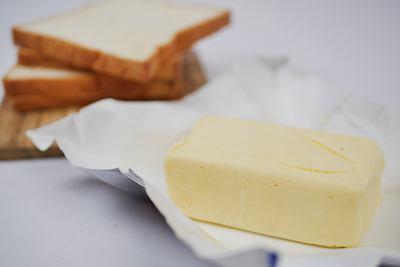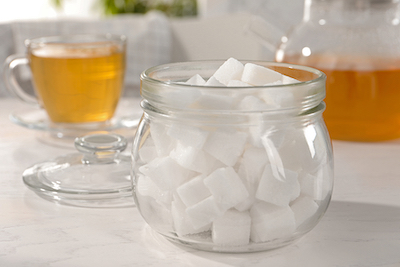In the age-old debate of butter vs margarine, there are die-hard fans on both sides. In recent years, there has been a rise in health-conscious individuals looking for the best alternative for their dietary needs. This article will dive into the differences between butter and margarine, examining their history, production, nutritional content, and health benefits and concerns. By the end of this article, you should have a clear understanding of both options, allowing you to make an informed decision on which is best for your personal preferences and lifestyle.
I. The History of Butter and Margarine
Butter has been a staple in human diets for thousands of years. The first documented evidence of butter dates back to around 2000 BCE in ancient India, and it has since played a significant role in the culinary traditions of various cultures worldwide. Made from the fat found in milk, typically from cows, butter has a rich, creamy taste and is used for cooking, baking, and as a spread.
Margarine, on the other hand, was created in the 19th century as a more affordable alternative to butter. In 1869, French chemist Hippolyte Mège-Mouriès developed margarine by combining beef fat, milk, and water. Since then, the production process has evolved, and modern margarine is typically made from vegetable oils. Margarine was initially created to address the need for a more accessible and affordable fat source but has since become a popular choice for those concerned about the health implications of consuming saturated fats found in butter.
II. Production Process
Butter is produced by churning cream, which is the fatty layer that rises to the top of milk when left to stand. The churning process causes the fat molecules in the cream to bind together, forming the semi-solid state known as butter. The remaining liquid, called buttermilk, is drained off and can be used for other culinary purposes.
Margarine production involves a process called hydrogenation. Vegetable oils are chemically modified by adding hydrogen molecules to create a more solid, spreadable texture. Manufacturers may also add additional ingredients such as water, salt, emulsifiers, and preservatives to enhance the product’s taste, texture, and shelf-life.
III. Nutritional Content
When comparing the nutritional content of butter and margarine, there are some key differences to consider:
- Fat Content: Butter is high in saturated fat, which has been linked to increased LDL (bad) cholesterol levels, raising concerns about its impact on heart health. Margarine, made from vegetable oils, contains more unsaturated fats, including polyunsaturated and monounsaturated fats, which are considered healthier options for heart health.
- Trans Fats: Some margarines, particularly those made using partially hydrogenated oils, can contain trans fats. Trans fats have been shown to raise LDL cholesterol levels while also lowering HDL (good) cholesterol, posing significant health risks. It is essential to choose margarines that are free from trans fats, opting for those that use non-hydrogenated or fully hydrogenated oils instead.
- Calories: Butter and margarine are both calorie-dense, with approximately 100 calories per tablespoon. When used in moderation, both can be part of a balanced diet.
- Vitamins and Minerals: Butter contains small amounts of vitamins A, D, E, and K, as well as some trace minerals such as calcium and phosphorus. Margarine, on the other hand, may be fortified with vitamins A and D, but its overall nutrient profile is less varied than that of butter.
IV. Health Benefits and Concerns
1. Heart Health: The most significant health concern surrounding butter and margarine is their impact on heart health.
As mentioned earlier, butter is high in saturated fats, which can raise LDL cholesterol levels and contribute to heart disease risk. Margarine, when made with non-hydrogenated or fully hydrogenated oils, is considered a healthier option due to its higher content of unsaturated fats. However, it is crucial to avoid margarines containing trans fats, as they can negatively impact cholesterol levels and heart health.
2. Inflammation: Some studies have suggested that consuming margarine with high levels of omega-6 fatty acids could contribute to inflammation in the body. On the other hand, butter contains a type of fatty acid called butyrate, which has been shown to have anti-inflammatory properties. To minimize inflammation, it is important to choose margarines with a balanced ratio of omega-3 to omega-6 fatty acids or opt for grass-fed butter, which typically has a higher content of anti-inflammatory omega-3 fatty acids.
3. Weight Management: Both butter and margarine are calorie-dense, and consuming them in excess can contribute to weight gain. However, some studies have shown that consuming moderate amounts of butter, which contains natural fats, may be less likely to contribute to weight gain than consuming highly processed margarines. Ultimately, moderation and portion control are key when incorporating either option into your diet.
V. Environmental Considerations
When choosing between butter and margarine, it’s essential to consider the environmental impact of each product. The production of butter typically requires more resources, such as land, water, and feed, as it relies on dairy farming. Additionally, the methane emissions produced by cows contribute to greenhouse gases and climate change. Margarine production, using vegetable oils, generally has a lower environmental footprint. However, it is crucial to consider the source of the vegetable oils, as the cultivation of some oil crops, such as palm oil, can contribute to deforestation and habitat loss.
VI. Taste and Culinary Applications
Taste and culinary preferences often play a significant role in choosing between butter and margarine. Butter is known for its rich, creamy flavor, and it often enhances the taste of baked goods and savory dishes. Margarine can have a milder taste, and its performance in various recipes may vary depending on the specific product and formulation.
When it comes to choosing between butter and margarine, there is no one-size-fits-all answer. The best option for you will depend on your personal preferences, dietary needs, and health goals. If heart health is a primary concern, margarine made from non-hydrogenated or fully hydrogenated oils, without trans fats, may be the better choice. However, if you prioritize natural ingredients and taste, butter, especially from grass-fed sources, might be the better option.
Ultimately, moderation is key, and it is essential to consider factors such as environmental impact and personal health goals when making your decision. By understanding the differences between butter and margarine, you can make a more informed choice that aligns with your preferences and values.














